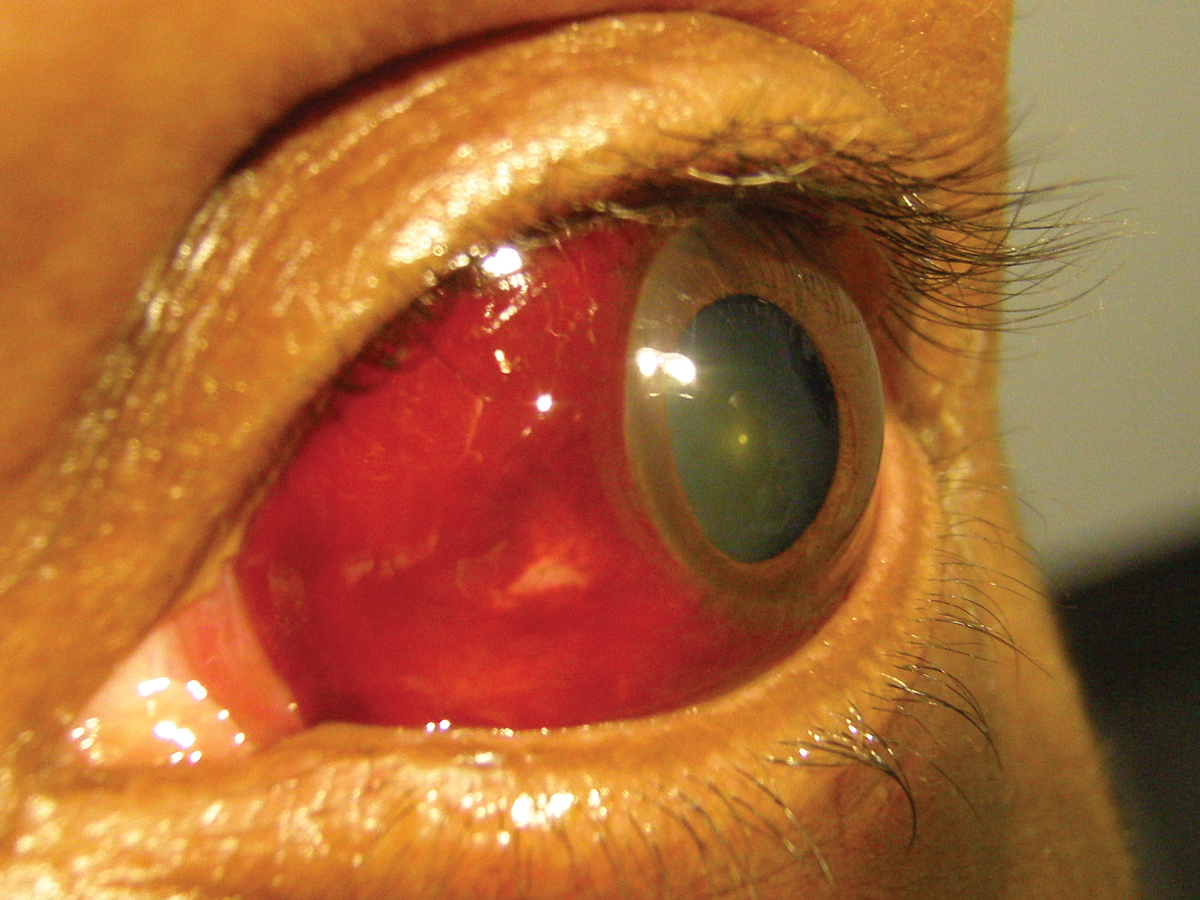 |
Subconjunctival hemorrhages were not linked to an increased risk of stroke in this study. Photo: Andrew S. Gurwood, OD. Click image to enlarge. |
It’s not uncommon to see a subconjunctival hemorrhage (SCH) in clinical practice, and generally speaking they look far worse than they seem; most are benign and painless. However, patients with this condition deal with the possibility of unrecognized underlying diseases or subsequent cardio/cerebrovascular events, so their doctors must decide when to suggest further investigation. Researchers in Korea recently used nationwide general population health data to determine the potential association between SCH and stroke or acute myocardial infarction (MI). They found that SCH itself is not a risk factor for either.
The study included 703,090 individuals aged 20 and older without any history of SCH, cerebrovascular disease or ischemic heart disease. The researchers then identified 46,251 cases of incident SCH and performed sensitivity analyses using 1:4 propensity score (PS)-based matched controls. To adjust for potential confounders, they investigated Cox regression models using defined demographic information, comorbidities, comedications and the Charlson Comorbidity Index score.
The hemorrhage group showed higher 10-year incidence probability of stroke or acute MI than the general population (3.17% vs. 2.71%, respectively); however, when compared with the PS-based matched controls, there was no difference (3.17% vs. 3.03%, respectively). Time-varying covariate Cox regression analyses without adjusting for confounders showed that SCH was associated with increased risk of subsequent stroke or acute MI; however, after adjusting for confounders, SCH did not increase the risk of stroke or acute MI.
The researchers noted that clinicians should reassure patients with SCH that it does not increase the risk for severe systemic diseases such as stroke or acute MI.
Patient characteristics the team found associated with an increased risk of both stroke and acute MI include male sex, older age, hypertension, diabetes, congestive heart failure and chronic kidney disease. “We would recommend attentive evaluation of underlying diseases in patients with SCH, in that SCH might share risk factors with stroke or acute MI.”
Jeon HS, Byun SJ, Hyon JY, et al. Risk of stroke or acute myocardial infarction in subconjunctival hemorrhage: a nationwide cohort study. Ophthalmic Epidemiol. November 18, 2021. [Epub ahead of print]. |

